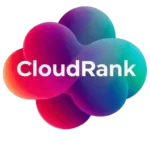In today’s rapidly evolving technological landscape, the Software as a Service (SaaS) business model has emerged as a formidable force, reshaping the paradigms of software deployment and consumption. As businesses increasingly pivot towards cloud-based solutions, understanding the intricacies of the SaaS model is imperative for stakeholders aiming to harness its potential. This article endeavours to elucidate the facets of the SaaS business model, offering a comprehensive blueprint for success. A software as a service overview reveals key advantages such as cost efficiency, scalability, and ease of access, making it an attractive option for businesses of all sizes. By eliminating the need for extensive IT infrastructure and maintenance, SaaS allows organizations to focus on their core competencies while leveraging cutting-edge technology. This paradigm shift not only enhances operational agility but also fosters innovation in service delivery and customer engagement.
by CHUTTERSNAP (https://unsplash.com/@chuttersnap)
Understanding the SaaS Model
At its heart, the SaaS model offers software applications over the internet on a subscription basis. This approach eliminates the need for users to install and run applications on their local devices, thus reducing the complexities associated with software maintenance and hardware compatibility.
The Evolution of SaaS
The journey of SaaS began in the early 2000s, but it has roots that trace back to the 1960s with the concept of time-sharing. Over the years, it has evolved due to advancements in cloud computing and internet accessibility. The SaaS model has matured significantly, driven by the proliferation of broadband, the advent of cloud infrastructure, and an increasing demand for flexible, scalable software solutions. This evolution has been marked by a shift from single-tenant architectures to more efficient, cost-effective multi-tenant systems.
Key Characteristics of SaaS
- Subscription-Based Pricing: Unlike traditional software licensing, SaaS operates on a subscription model, offering flexibility in pricing and scalability. This aspect not only democratises access to software but also ensures predictable revenue streams for providers.
Customers benefit from the ability to start small and expand services as their needs grow, whilst providers enjoy a steady cash flow that facilitates ongoing innovation and service improvement. 2. Multi-Tenancy Architecture: SaaS applications employ a multi-tenancy architecture where a single instance of the software serves multiple customers. This architecture optimises resource utilisation and facilitates seamless updates and maintenance. Multi-tenancy allows providers to efficiently manage resources, reducing costs and improving service delivery. Customers experience consistent performance and access to the latest features without needing to worry about software upgrades. 3. Scalability and Elasticity: SaaS platforms are inherently scalable, allowing businesses to adjust their usage based on demand. This elasticity is a significant advantage, particularly for start-ups and small enterprises that experience fluctuating workloads.
Scalability ensures that businesses can handle growth without significant investment in new infrastructure, whilst elasticity allows them to manage peak demands and optimise operational costs effectively. 4. Accessibility and Integration: Accessible via a web browser, SaaS applications offer unparalleled convenience. Furthermore, they often provide APIs and integration capabilities, enabling seamless interoperability with other systems. This accessibility supports remote work and enhances collaboration by allowing users to access applications from any location. Integration capabilities ensure that SaaS solutions can fit into existing business ecosystems, enhancing productivity and reducing data silos. 5. Security and Compliance: Security is a paramount concern in the SaaS model, and providers invest heavily in securing their platforms. Compliance with industry standards and regulations is critical, especially for sectors like finance and healthcare.
SaaS providers implement robust security measures, including data encryption, regular security audits, and compliance with frameworks such as GDPR and HIPAA. This ensures that customer data is protected, and regulatory requirements are met, fostering trust and confidence in SaaS solutions.
The Strategic Advantages of the SaaS Model
The SaaS model confers numerous strategic advantages that have catalysed its widespread adoption across industries.
Cost Efficiency
One of the most compelling benefits of SaaS is cost efficiency. By obviating the need for substantial upfront capital expenditure on infrastructure and software licences, SaaS allows businesses to allocate resources more effectively. Operational expenses are further minimised as the responsibility for software updates, security patches, and infrastructure management lies with the service provider.
This model provides a lower total cost of ownership, as businesses pay only for what they utilise, aligning expenses with actual requirements and enabling better financial planning.
Rapid Deployment and Time-to-Value
by British Library (https://unsplash.com/@britishlibrary)
SaaS solutions can be deployed rapidly, often within hours or days, compared to the drawn-out timelines associated with traditional software deployments. This swift time-to-value is particularly advantageous for businesses seeking to capitalise on market opportunities or pivot strategies swiftly. The ability to promptly implement SaaS solutions allows companies to remain nimble, respond to competitive pressures, and seize new business opportunities without delay. Furthermore, the SaaS model supports continuous delivery, ensuring that users always have access to the latest features and improvements.
Enhanced Collaboration and Mobility
The cloud-based nature of SaaS facilitates enhanced collaboration and mobility, enabling teams to access applications and data from anywhere with an internet connection. This flexibility supports remote work, allowing employees to collaborate seamlessly across geographies. SaaS solutions often include collaboration tools that integrate with other applications, providing a unified platform for communication, project management, and document sharing. This heightens productivity by enabling real-time collaboration and decision-making, regardless of team members’ physical locations. Additionally, mobile access ensures that teams can stay connected and productive, whether in the office, at home, or on the move.
Security and Reliability
SaaS providers prioritise security and reliability, offering robust solutions that protect against data breaches and ensure consistent performance.
With dedicated teams managing security protocols, customers benefit from advanced security measures that might be too pricey to implement on their own. Reliability is guaranteed through scalable infrastructure and redundancy measures, providing high availability and minimising downtime. These features make SaaS an appealing option for businesses that require dependable, secure solutions without the hassle of managing complex IT environments themselves.
Continuous Innovation
SaaS providers are motivated to continually innovate and enhance their offerings, ensuring that customers benefit from the latest technologies and features. Regular updates and improvements are seamlessly delivered without disrupting users, who enjoy access to cutting-edge capabilities and improved functionality. This continuous innovation cycle allows businesses to leverage new technologies and maintain a competitive edge in their sectors.
Moreover, the feedback loop between providers and users fosters a dynamic environment where solutions evolve based on real-world use cases and customer requirements.
Customisation and Personalisation
While SaaS solutions are generally designed to be one-size-fits-all, many providers offer customisation options to tailor applications to specific business needs. Customisation can range from simple configuration settings to more advanced features like custom workflows and integrations. Personalisation enhances user experience by allowing businesses to align the software with their processes and branding, improving adoption rates and user satisfaction. SaaS providers often offer consulting services to help businesses optimise and personalise their solutions, ensuring that they derive maximum value from their investment.











